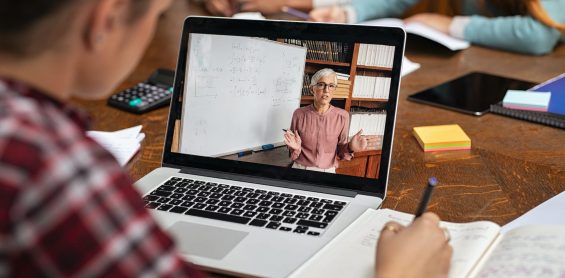Three basic rules for successful online learning

Polish schools and universities have undergone revolutional changes in recent weeks. They had to plunge into the 21st century and the world of digital education in just a few days, often without previous preparation, without the required equipment, tools, but foremostly, not being aware of the differences between digital and face-to-face education. Teachers and lecturers, students and their parents made a huge effort to bring about this revolution. By following a few simple rules, they can make their work much easier and get better results.
Rule No. 1. Distance is critical – let’s overcome the missing of face-to-face factor.
The teacher or lecturer constantly observes students’ behavior and can react to it in real time when teaching in the classroom. Besides material he or she has prepared, it’s also about the teacher’s charisma, personality, facial expressions and gestures, dramaturgy and creating the class dynamics. The teacher works on all senses of the audience. In addition, there is also the surrounding – everything matters: the quality of teaching aids in the classroom, their colour and the comfort of the chairs. Over the years, teachers and lecturers develop their style of work in the classroom, and then adapt it to each subsequent group of students. Suddenly, it has all become practically useless. This means that they have to modify their methods or even develop them from scratch.
- Online learning material must be suitable for different types of audience. The teacher must pay attention to the different needs of both visual and auditory learners and make the material attractive for each of these groups, e.g., an interesting live lecture supplemented with charts, pictures, graphics. It is also worth remembering that extroverts who have distinguished themselves so far in the class may need more attention than before, and introverts absorb the material faster than in the classroom. Pay special attention to the needs of people with visual and hearing disabilities!
- The teacher’s personality, key for face-to-face learning, recedes into the background. New, engaging forms of activities are necessary. It is a good idea to develop exercises, open-ended questions, quizzes and introduce discussion forums.
- You have to remember that real contact with another person is crucial even in online learning. It is important to build a community of students, organize live meetings using chat rooms and other tools. Regardless of the form of learning, there must be regular contact between the teacher and the students (e-mails, chats, forums).
Rule No. 2. Choice of tools: free or paid?
The fact that we have recently undergone a revolution does not mean that we do not have ready-made, proven tools at hand. Many of them are free. Schools can use Google Classroom, a simple and functional platform that allows them to conduct classes and organize their students’ work – sending them materials and checking completed assignments. Schools must officially register their G Suite account (access is free). The Microsoft package works similarly. After logging into the educational institution, the services are free. At universities, the Moodle platform works best (however, it requires some customization to fit individual needs). It is also possible to use typical business tools, such as: Google Hangouts, Zoom, Google Meets in the G Suite package and Teams in the Microsoft package. All of them enable “live” meetings with the use of phone or computer microphones and camers.
Educational institutions, mainly universities that focus on online learning in the long term, invest in dedicated platforms, thus making sure that the platform can “accommodate” all students and necessary materials, and meet their expectations. For example, students of architecture or philology may need separate tools. If a university or school wants to invest in creating professional e-learning training, it is worth considering such tools as Articulate Storyline or Adobe Captivate (foreign companies) or Polish Neducatio. You also need to record lectures and create films for professional trainings. It is worth to consider such costs when creating both the budget and developing the course development schedule.
Rule No. 3. Monitoring the learning outcomes, or how we are doing.
“Last but not least” – the last, but certainly not the least important thing that we need to prepare for is the monitoring of the learning outcomes. This is crucial because, unlike in the classroom-based lesson, the teacher cannot check how much the student has learned to during single classes. We need to carefully design the process and tools for ongoing testing and monitoring the learning outcomes. These can include pre- and post-tests, exercises and quizzes during the course. We could also introduce competitions and rankings. However, just like in the process of knowledge transfer, nothing can replace human monitoring of the learning outcom, however, as in the process of transferring knowledge, can replace direct human contact. The student must not be left alone with the material. The teacher or lecturer must stay in regular contact with students, offer guidance and provide support. Without this, the learning outcomes will not be satisfactory.
Use proven patterns.
The Polish e-learning industry has been developing dynamically since the early 2000s. Initially, it entered the world of business, and later it expanded into education, targeting mainly universities and professional trainings. Many universities all over the world make their classes available – often free of charge – on Coursera, Khan Academy, Future Learn. There is also a Polish platform of this type: Navoica. For 6 years now, Vistula University has been conducting online studies in three fields of study: Economics, Finance and Accounting, and Management. This year, we also added International Relations to our offer. We have many great specialists in Poland and knowledge resources that useful and available now.
See more at: Interactive Online Studies at Vistula